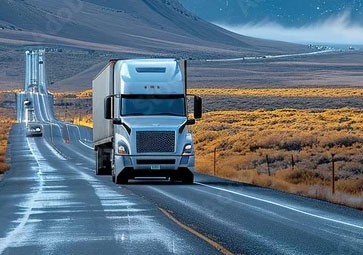Blog
From 1985 to Now: How Recruitment, Safety, and Logistics Have Transformed in New Zealand
August 2025
At Driveforce, we’ve seen significant change since 1985 — in how people are recruited, how businesses manage safety, and how logistics operate daily. This article examines what’s changed, what’s still evolving, and what the future holds.

Recruitment Then vs Now
1985: When I entered the workforce in 1985, recruitment was slow and straightforward. Paper CVs were mailed, reference checks were light, and hiring often meant simply putting someone in the seat and hoping it worked out. Health and Safety, as we know it today, was non-existent.
2025: Recruitment becomes faster, more thorough, and better regulated. Job ads go live instantly, candidates expect responses immediately, and employers carry out background, licence, visa, and security checks as standard. This isn’t about being nosy – it’s about compliance, risk management, and customer expectations.
The Impact of Health & Safety
The Pike River tragedy marked a turning point. The Safety at Work Act 2015 fundamentally changed how businesses in New Zealand operate. Safety is now a board-level responsibility with clear accountability.
For transport, that means:
- Electronic logbooks and other mechanisms closely track fatigue and work hour limits.
- Drug and alcohol policies are common practice in most organisations.
- From Board representatives down the chain of command, they must demonstrate they are managing risk.
Health and safety no longer just sits in a folder – it guides how we recruit, train, and oversee every worker.
Technology and Expectations
Our method of interacting has also shifted.
- Back then: Letters often took days to arrive, and replies could take weeks.
- Now: Instant messages, real-time job posts, and same-day interviews.
This has heightened expectations. Candidates seek speed, clarity, and flexibility. Employers want real-time proof of compliance and operational visibility.
Logistics: The 1980s vs Today
Mid-80s: Dispatch boards, two-way radios, and paper logbooks. Limited visibility once a truck left the yard.
Now:
- Telematics and GPS enable real-time monitoring.
- Electronic logbooks automatically ensure compliance.
- High Productivity Motor Vehicles (HPMV) transport more freight efficiently.
- E-commerce has driven significant growth in parcel volumes and made next-day delivery standard practice.
Still evolving: automation in depots, AI-assisted routing, and increased utilisation of data dashboards to optimise fleets.
Workforce Realities
New Zealand’s transport workforce is ageing, and the driver shortage is structural. Workers across the industry often want more flexibility and a better work-life balance, not 12-14 hour days, five days a week.
That means:
- Roster design should take fatigue into account.
- Semi-retired or part-time drivers form a valuable talent pool.
- Respectful and consistent scheduling maintains engagement.
What Organisations Must Embrace
- Skills-first recruitment with transparent job previews.
- Digital compliance licences, visas, logbooks, and safety data are all available online.
- Fatigue-aware rostering that prioritises health and well-being.
- Age-positive pathways ensure that experience isn’t lost when workers reduce their hours.
- Partnerships with on-hire providers that encourage transparency and uphold strict compliance.
The Importance of Flexible On-Hire Companies
Flexible staffing providers are no longer merely gap fillers. When implemented effectively, they:
- Supervise workers to ensure they comply with licence, visa, and safety standards.
- Provide fatigue-aware rosters and on-call cover during busy periods.
- Deliver safety refreshers and training to meet customer standards.
- Report key safety and performance indicators to clients.
This is how on-hire supports compliance and performance.
Driveforce’s Commitment
At Driveforce, we’re shaping our service around the realities of today’s workforce and the challenges of the future.
- Zero-surprise hiring: structured interviews and realistic job previews.
- Compliance integrated: licence, visa, and background checks handled as standard.
- Fatigue-smart scheduling: designed to meet legal and health standards.
- Age-positive pools: engaging semi-retired and part-time drivers with the flexibility they need.
- Transparent reporting so clients can view key metrics, fill rates, retention, and safety indicators.
Our goal is clear: provide clients with flexibility without risk, and offer workers respect, certainty, and opportunities to grow.
Closing thought
Recruitment, safety, and logistics have evolved significantly since 1985. Yet, one principle remains unchanged: people are central to everything. Organisations that prioritise safety, adaptability, and culture will succeed in the future. Driveforce is here to assist them in that pursuit.
Brent Mulholland
Founder and Managing Director | Driveforce Limited
Email: support@driveforce.co.nz
Mobile: 0277626677
